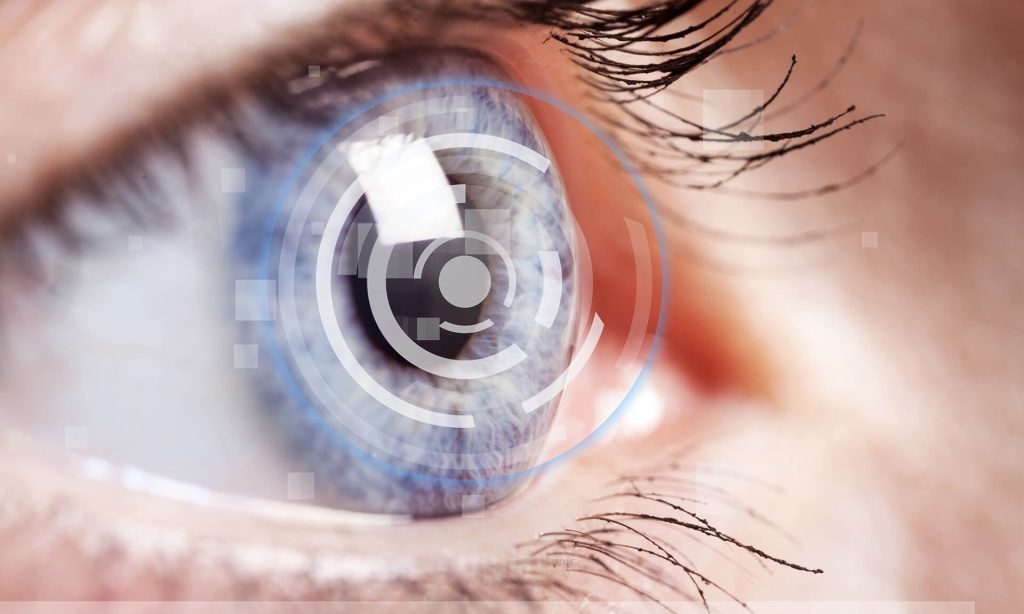The advantages of an astigmatism-correcting lens implantation procedure for cataract surgery patients.
About one in three people have visually significant astigmatism, or an imperfection in the curvature of the cornea that can cause blur and defocus. This refractive error can be corrected at the time of cataract surgery by three main methods: implanting a cylinder-correcting intraocular lens known as a toric IOL, limbal relaxing incisions, or a combination of the two. Toric IOLs are most commonly used during cataract surgery because they are designed with diverse powers in different meridians of the lens to correct the asymmetric power of the eye. Toric lens implants can be used to correct as little as 0.50 D of astigmatism. For patients who have 1.00 D or more of cylinder, toric IOLs are preferred over the other method because the latter can be less effective.1
Patient Candidacy
About 30% of individuals with cylinder have between 1.00 and 2.00 D of astigmatic error.2 A patient can be a candidate for toric IOLs if he or she has cylinder of at least 0.50 D and is interested in spectacle independence for at least one distance of vision, usually far. After surgery, most patients (97%) report freedom from glasses for far vision.3 If spectacle independence is desired at additional focal points (ie, near and intermediate), a toric IOL including a multifocal optics such as the Intensity (Hanita Lenses) is an appropriate option.
The cataract surgery technique for toric lens implantation is the same as conventional cataract surgery except that the lens must be correctly oriented in the eye according to the axis of cylinder. Patients must therefore undergo a thorough but simple preoperative examination including corneal cylinder measurements with manual refraction, keratometry (K), and topography. Using these measurements, the cylinder and axis of astigmatism will be confirmed by manual Ks, optical biometry, and/or corneal topography. It is important to obtain the total before proceeding with IOL power calculations. Additionally, getting the right axis of orientation for a toric IOL is crucial. A variety of calculators can be used to determine the axis of orientation of the lens. Intraoperatively, a manual or digital marking technique can be used to align the toric lens at the appropriate axis.
Toric lenses are designed to correct regular corneal astigmatism. Patients with irregular astigmatism caused by corneal scars or ectasia, zonular instability, posterior capsular dehiscence, poor pupillary dilation, and a history of prior vitreoretinal or glaucoma surgeries are not suitable candidates for toric IOLs.4
Most patients do well with toric lens implantation and achieve excellent postoperative results and correction of astigmatism. Postoperative toric IOL decentration or tilt, however, can lead to suboptimal visual outcomes. Realignment is needed in a small percentage (0.65–3.3%) of cases.4 This risk can be reduced with several surgical maneuvers, including a perfect capsulorhexis, removing all viscoelastic material from the eye, and meticulous wound construction and closure.

Toric IOL Optical Designs
Toric IOLs typically come in three optical designs. These are monofocal, extended depth of focus, and multifocal/trifocal. With a monofocal toric IOL, patients can achieve good distance vision without glasses. Glasses are typically required for near and intermediate vision, however. Some patients are more comfortable with the idea of a toric IOL that also allows them to achieve higher rate of spectacle independence, which is achieved with a multifocal version of these lenses.
Some IOLs with available toric lens models include the following (in alphabetical order by manufacturer): AcrySof (Alcon), Clareon (Alcon), enVista (Bausch + Lomb), Vistor (Hanita) , Trulign (Bausch&Lomb), AT Torbi (Carl Zeiss Meditec), Intensity (Hanita), iSert (Hoya), Torica (HumanOptics), Tecnis (J&J Vision), Tecnis Symfomy (Johnson & Johnson Vision), Precizon (Ophtec), PerfecTor (Hanita)Pod FT (PhysIOL), FineVision (PhysIOL), and Lentis (Teleon Surgical).
The Intensity with Dynamic Light Utilization (DLU) technology. This multifocal toric lens is designed with three zones and 12 smooth steps of different heights on the lens radius (maximum step height, 3.6 µm) to provide exceptional light efficiency and high visual acuity at all distances and lighting conditions. The optical configuration of the Intensity creates five foci symmetrically distributed around zero order at intermediate distance, meaning that the refractive focus is concentrated on intermediate vision.
The Intensity’s high light efficiency adds energy to the visual system. Combined with the distribution of the five foci, this works to provide seamless vision, reduce visual disturbances present with other multifocal IOLs, and thus create continuous vision in all distances and lighting conditions.
The Intensity Toric IOL is available in cylinders ranging from 1.00 to 4.50 D. The lens’ plate-haptic design promotes exceptional stability in the capsular bag.
Conclusion
Toric IOLs can provide excellent postoperative vision and astigmatism correction at the time of cataract surgery. Multifocal toric IOLs such as the Intensity offer cataract surgery patients the opportunity to achieve spectacle independence and continuous vision in all distances.
- Lake JC, Victor G, Clare G, Porfírio GJ, Kernohan A, Evans JR. Toric intraocular lens versus limbal relaxing incisions for corneal astigmatism after phacoemulsification. Cochrane Database Syst Rev. 2019;12(12):CD012801.
- Helting G. Astigmatism and cataract? A toric IOL can fix both. All About Vision. Accessed May 24, 2023. https://www.allaboutvision.com/conditions/toric-iols.htm
- Holland EJ. Acrysof Toric IOL: surgical pearls. Cataract & Refractive Surgery Today. May 2006. Accessed May 23, 2023. https://crstoday.com/articles/2006-may/crst0506_13-html
- Kaur M, Shaikh F, Falera R, Titival JS. Optimizing outcomes with toric intraocular lenses. Indian J Ophthalmol. 2017;65(12):1301-1313.

